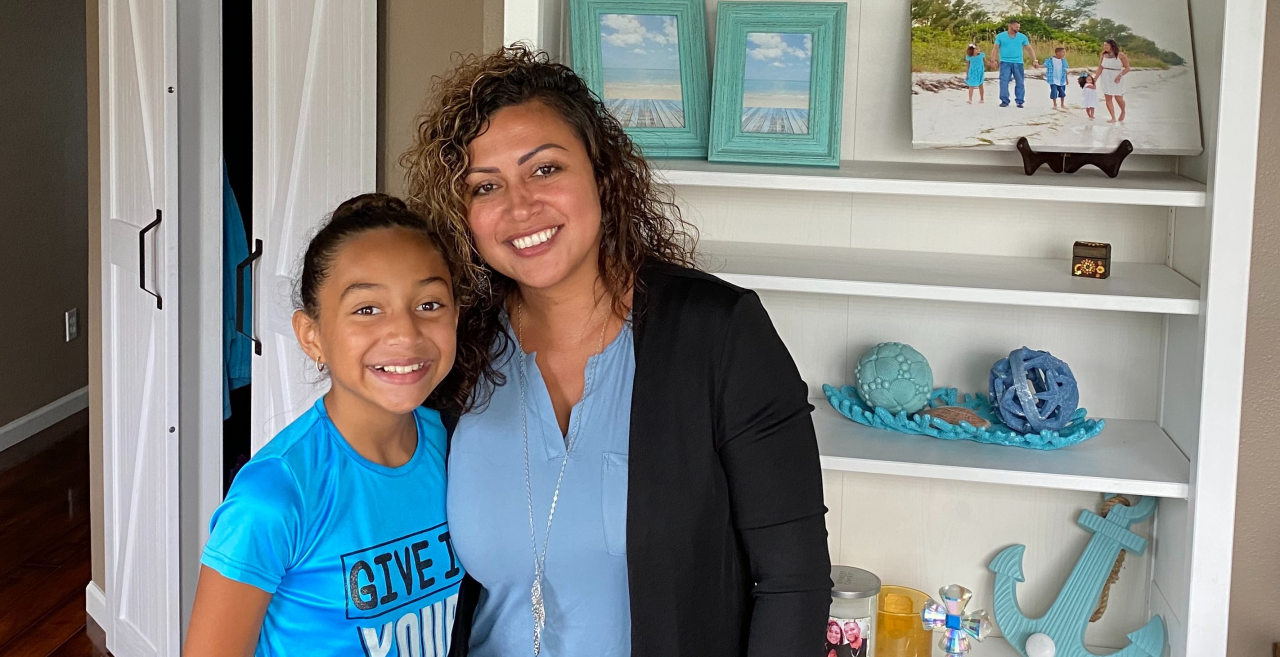TAMPA, Fla. — While every school in Florida is open for in-person learning, the state is seeing thousands of parents opting to keep their children online, revealing that the pandemic may have given new life to virtual learning.
“She soared. She was able to take her great grades and make them excellent, which as a mom I was super happy to see, and it worked for her,” Alicia Muniz, a parent of a 4th grader and a teacher in Hillsborough Virtual School.
Muniz has been a teacher for 15 years and currently teaches 4th grade English Language Arts, switching to the virtual program last year.

“It gave me more of that one on one time, undivided attention was really big also with a lot of students. If a student needed help in a classroom, we can always pull them to the back table but on virtual, you are without distractions, you are on a Zoom, you're on face to face and they not only did the students feel more comfortable, I think teachers have the ability to really dig deep into… whatever it is,” Muniz explained.
While every school in Florida is open for in-person learning, the virtual school remains an option for students either through the state program, a charter school, or a district developed program.
“Education is changing,” said Matthew Hoff, Director of Virtual Instruction Programs with Hillsborough County Public Schools. “Parents have realized they have new options, new ways to learn.”
At the end of last school year, Hillsborough County had 3,400 students in their full-time virtual program. This year, they may exceed that.
“Right now we currently have 2,600 kids enrolled fully for next year with about 800 to 900 that are finalizing the enrollment process through the choice office,” Hoff explained.
That’s up from 330 students pre-pandemic, and changes like that are happening throughout the state.
“We're outpacing pre-pandemic enrollments in our application system right now,” Robin Winder, director of instruction at Florida Virtual Schools (FLVS) told ABC Action News.
Hillsborough County’s virtual program is a franchise of FLVS, so the 3,400 students are part of more than 39,000 in FLVS franchise programs across the country.
That’s not including their ‘full-time equivalent’ enrollment numbers. To break those down:
- 2015-2016 FTE = 32,076
- 2019-2020 FTE = 39,213
- 2020-2021 FTE = 52,865
In addition to FLVS, independent district programs enrolled more than 21,000 students and virtual charters enrolled 5,100 students for the 20-21 school year.

The challenges are in-person activities and socialization.
“Previously kids would come in for labs, kids would come in for in person activities, and, you know, with the program growing and obviously with the pandemic that's been very difficult,” Hoff stressed, “So as we move forward trying to get back to more some of those things because as we know the socialization of kids is very critical.”
While many parents may have opted for virtual school to keep their families safe from COVID-19, the numbers shows its success will likely outlast the pandemic.
“It's definitely something that's up and coming,” Muniz said. “I think it's virtual is definitely got a spot and future for education because a lot of families are realizing that this type of a platform works for their child keeps them safe from COVID, at the same exact time, it gives them way more opportunities, not only for parents and teachers to have a better relationship but for parents and their students to have a better relationship.”
FLVS enrollment is closed for high schoolers, but remains open for grades K-8 until August 13. Because it is a choice program, students can opt-in and out at any time.
One topic of concern that surfaced last year, was the amount of state funding allocated to certain virtual programs over students’ home districts.
Lawmakers passed legislation to cap enrollment at a district virtual school to half local students, half outside students. This creates a cap on families trying to get into certain programs outside of their home towns and keeps funding in local districts or the state’s virtual school.




